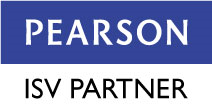Student Management Software Integration Issues & Troubleshooting
published on October 14, 2014 by Sonia Mastros
bus routing software, software integration, PowerSchool, Power School, bus software, powerschool integration
It's usually the little things that cause some of the biggest headaches.

Here are a few of the most common issues we have people dealing with, especially when first getting up to speed with database software integration. When looking to integrate student management software into your overall transportation operations, there are always going to be minor issues that crop up. Most of these are no different than in most networks, and usually don't require much in the way of tech support.
Common Easy Fixes During Software Integration
1 - Check network connectivity.
In past decades of computing, "reboot it!" was the classic fix for most strange behavior. While it still helps some of the time, networked devices these days truly are far less likely to need periodic rebooting. In some cases, they should not be rebooted at all unless there's no other option.
Instead, the most common reason for a device to fail in an integrated transportation system is that it's lost network connectivity. So, before doing anything else, verify the network is running properly and that everything you need is properly connected to it. Even in huge office complexes, wires get accidentally unplugged.
Also, if GPS bus tracking systems are part of your operations, don't overlook connectivity there. Most active GPS systems rely on cell phone networks for data transmission.
2 - Verify your file permissions.
Integrated databases require the software be able to read and write to them at will. A lot of of the time, especially when migrating a database from one application to another, file permissions will get corrupted somewhere along the way. Be sure all your data is able to be accessed by the apps that need it.
Likewise, a software integration project is also a good time to verify all your human access permissions as well. Review the employee roster, and ensure anyone who needs access to the transportation database is allowed in.
3 - Use official mobile apps when possible.
While most student information systems, like Pearson PowerSchool, have a web interface that can be accessed from anywhere, employees and students on mobile devices will have better luck with the official app. There are fewer compatibility issues than you get with mobile web browsers, which tend to be very uneven in their ability to render complex web pages.
If an app is an option, the answer to anyone having mobile problems is to download it, and try again. That should remove a lot of time spent dealing with compatibility on the multitude of mobile hardware out there.
4- Verify port forwarding
Some student management systems require port forwarding to be configured on the client machine. Pearson’s PowerSchool, for example, will send student change notifications to a specified port. Verify that port forwarding is properly configured on your router and that the connection is allowed through the firewall.
5- Check your security certificates
Pearson’s PowerSchool requires a security certificate to be registered, both on the client machine and on your PowerSchool server. Are both files registered correctly? Are they both valid and not expired?
6- Are any necessary plug in files installed and enabled?
PowerSchool requires Orbit Software’s Live Sync plug in to be installed and enabled on your PowerSchool server.
7 - Test Everything First
Finally, just as a general recommendation: never implement any new features on a "live" student information system without first running them in a test environment that's separate from your main operations.
New packages or hardware installations can often cause compatibility issues with existing software. Simply testing them in a "sandbox" environment will usually let you know whether you're going to have difficulties that the vendor can help with.
Stick To The Basics If You Have Problems With Your Software Integration
Some schools end up spending too much time on the phone with their software providers, when they could just fix the issue themselves and get on with things. Don't forget the basics of networking if there's an issue. You can often make your life - and that of your staff- a lot easier with some basic troubleshooting.






